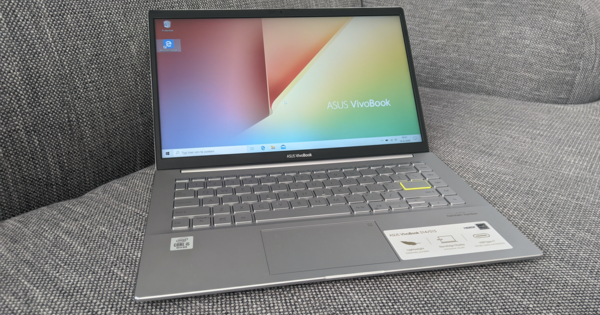Chances are that your old desktop PC is gathering dust in the attic. Sin! Because you can still do fun things with it. In this article we present you thirteen different ideas.
Tip 01: Power consumption
Before you take your old computer out of the closet and put it to use again in some way or another, you should be aware that such a device consumes power. Not infrequently even more power than a modern machine with its energy-efficient(r) components. You will therefore have to decide for yourself whether the benefits of reuse outweigh the costs of that extra power consumption. Also read: 12 times a new life for your old tablet.
Using an old PC as a NAS (with free software such as FreeNAS), for example, is often presented as an excellent option. That may be true, but do not forget that a 'real' NAS with its sophisticated energy profile is very energy efficient. If the ideas from our article don't convince you, you can always consider donating your computer to an acquaintance or to a local school. You can also sell it at an online auction or at least recycle as many parts of it as possible.

Tip 01 A 'real' NAS consumes much less power than an old PC.
Distributed Computing
Tip 02: Math
Scientific research often requires very complex calculations and therefore enormous computing power. Not every institution or university can afford a supercomputer for this. Distributed computing is a much cheaper alternative and you can help with that with your old computer! With distributed computing, DC for short, the calculations are split over thousands of less powerful computers.
All calculations then return nicely to the computer center of the institution. One of the most popular platforms for this form of DC is BOINC (Berkeley Open Infrastructure for Network Computing). The software (for various operating systems) you need for this can be found here. Click here Download / Download BOINC.

Tip 02 Who knows, your name may end up on the list of the hundred most active participants of BOINC!
Tip 03: BOINC project choice
We show you how to install and use BOINC on a Windows PC. Installation only takes a few mouse clicks: three times Next, once install and Finish. You do have to restart your PC. Normally, the BOINC management module appears after the restart. If that is not the case, you can still start it via Allprograms / BOINC / BOINC Manager. At this stage, in any case, choose Projectadd. BOINC now offers you the choice between forty different projects.
It is also possible to divide the computing power of your PC over several projects at the same time. Each project comes with a summary description as well as a link to a site where you can go for additional information. Select a project of your choice, let No, new user and fill in the requested information. Press Next one and on Complete. You now arrive at the project site where you can enter additional information if desired.

Tip 03 Choose one or more projects of your choice that you would like to be involved in.
Tip 04: Project management
When you return to the BOINC Manager you will notice that your project has meanwhile been added and that 'work is being downloaded', a process that can take a while. You can temporarily stop the activities at any time via the button Interrupt and restart with To resume. You can also permanently remove a project: choose Project specific instructions and press remove. Detailed information about an ongoing project can be found via the menu Display / Advanced.
We recommend opening all tabs here to get to know the interface. With Ctrl+Shift+V you return to the simple view of the BOINC Manager. A handy feature of BOINC is that you can set how much load your processor can be loaded. In advanced view, open the menu Project management and choose processingpreferences. Here you can specify exactly when the project may be active and how intensively it may be.

Tip 04 The first project phase: downloading the 'calculation'.
Linux for kids
Tip 05: Children's distros
You can experiment with a different operating system relatively safely in several ways. You can run the OS in a virtual machine, for example with the free program VirtualBox. You can also set up a dualboot construction, or try it with a tool like Wubi (which installs Ubuntu like an application within Windows). In these three cases, you usually install the operating system to try out on your favorite computer. Your old computer also offers a way out here, because you can use it to test an alternative. We are going for a child-friendly operating system here.
There are various Linux distributions that specifically target a young target audience. For example, Qimo and LinuxKidX are already suitable for children from 3 years old, while Sugar, Ubermix and especially Edubuntu target slightly older children. We show you how to install and use the popular Qimo, all the more so because Qimo is also ideally suited for a home PC (and is less focused on use in a classroom environment).

Tip 05 There are several Linux distributions that target children.
Tip 06: Qimo installation
Basically, like most other Linux distros, you can boot Qimo from a live CD or USB stick. However, the operating system works faster and easier (for example when installing additional applications) if you install it on the hard drive. The homepage of Qimo is www.qimo4kids.com, where you will find various download options. The mirror worked fine during our test. You can also use the bittorrent network to download the distribution. Burn the downloaded ISO file to a live CD, for example using the free CDBurnerXP. Then boot your computer from this CD. Set the desired language (Dutch) and choose Install Qimo. Set the requested options (Language, Country, keyboard layout), let Qimo empty and use the entire disk and choose a login name. Of to install start the installation.

Tip 06 The installation of Qimo hardly takes ten minutes.
Tip 07: Qimo operation
About ten minutes later the installation is over and you can restart the computer. If all is well, the Qimo graphical interface will appear shortly after. You can start seven applications immediately via the striking buttons at the bottom of the screen. Other applications can be found via the menu button at the top left. Especially the options Educational and games are specifically aimed at children. Admittedly, a number of applications are aimed at English-speaking children, but there are also programs that do not require any language knowledge. You can of course also add other applications. This can be done (for example) via Menu / System / Ubuntu Software Center / Get Software, where you can then select the desired theme (such as Audio andvideo, Educational, Graphic, games) opens, selects an application and clicks the to install press.

Tip 07 Installing additional applications is not complicated.
Anonymous (er) internet
Tip 08: Tails principles
When you access the internet from your trusted Windows environment, it is never without risk. You do not know with 100% certainty that no malware is active and your browser also leaves all kinds of traces, including your IP address. Tails (The Amnesic Incognito Live System), which uses the anonymizing Tor network, reduces those risks to almost nil.
Download the ISO file and burn it to a DVD, which you can use to boot your old computer. Mind you, Tails is a real 'live' system, which means that you run it completely from the DVD. In principle, you could also do this from your own computer, but it is always safer to use an otherwise unused PC, or at least a PC on which no important data is stored.

Tip 08 Tails: Built on Debian, relying on Tor.

